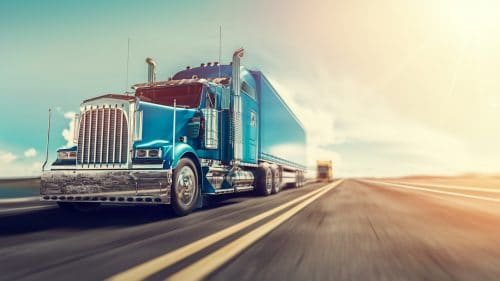Safety authorities are considering the risks and benefits of allowing big rig trucks to tailgate

Many different companies have been exploring the potential for automation to improve safety and efficiency on the road. For example, vehicle to vehicle (V2V) communication presents the opportunity for vehicles to exchange information about their speed and position, which would help to prevent accidents, reduce traffic, and improve the environment by increasing fuel efficiency. One very specialized application of V2V communication is platooning.
What is Platooning?
Platooning refers to two big rig trucks traveling together in a close convoy using V2V communication. Using radar, GPS, and Wi-Fi, the V2V communication technology automatically controls the rear vehicle’s acceleration and braking based on the movement of the lead vehicle. This basically enables the rear truck to tailgate the lead truck. Platooning is currently being tested in California, although our state does have laws against following too close—which platooning technically would violate.
Benefits of Platooning
When two trucks are platooned, they can travel at highway speeds with just 50 to 80 feet between them. This is close enough to affect the drag on the vehicles and create aerodynamic improvements that can save fuel. The lead truck will save about 4.5 percent, while the rear truck will save about 10 percent. This not only translates into savings for the trucking industry; it also helps reduce emissions and protect the environment.
Potential Risks of Platooning
There are laws against tailgating or following too close for good reason. Legislators in many states are against the technology, worrying that allowing trucks to tailgate could lead to accidents. If the technology were to malfunction, the driver of the second truck would not have time to avoid rear-ending the lead truck. Another concern is that the drivers of other vehicles might not be able to identify platooned trucks and might try to cut in between them. Platooned trucks could also interfere with traffic flow, especially in congested areas with short onramps.
A Middle Ground
Researchers from the US Department of Transportation have looked into some of the safety questions surrounding platooning. They found that maintaining a following distance of one second could allow enough time for the second driver to react to any malfunctions, while still preserving the benefits of platooning. The normal following distance for unlinked vehicles is two seconds.
Need Help with a Big Rig Truck Accident Claim?
Despite improvements in safety technology, big rig truck accidents do happen. If you have been injured in a big rig truck accident that was not your fault, The Law Offices of Larry H. Parker will stand up for your right to full and fair compensation. Call us at 800-333-0000 now for a free case evaluation.



